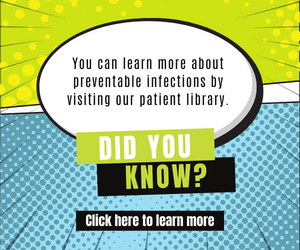Glossary
Our Vaccines411 glossary provides quick and easy access to certain scientific and technical terms featured throughout the website.
Can seem to find a term you’re looking for? Feel free to request it by emailing ac.114seniccav@troppus.
A
b. of or relating to a substance used to prevent or treat a viral infection
(https://www.dictionary.com/browse/antiviral)
B
C
D
E
Ebola virus disease (EVD or Ebola) is a rare but severe illness in humans. It is often fatal. People get infected with Ebola by touching:
- infected animals when preparing, cooking or eating them
- body fluids of an infected person such as saliva, urine, faeces or semen
- things that have the body fluids of an infected person like clothes or sheets.
Ebola enters the body through cuts in the skin or when touching one’s eyes, nose or mouth. Early symptoms include fever, fatigue and headache.
Some types of Ebola can be prevented with vaccines and treated with medicines. (https://www.who.int/en/news-room/fact-sheets/detail/ebola-virus-disease)
G
H
I
J
L
M
N
O
P
Poliomyelitis (polio) is a highly infectious viral disease, which mainly affects young children. The virus is transmitted by person-to-person spread mainly through the faecal-oral route or, less frequently, by a common vehicle (e.g. contaminated water or food) and multiplies in the intestine, from where it can invade the nervous system and can cause paralysis.
Initial symptoms of polio include fever, fatigue, headache, vomiting, stiffness in the neck, and pain in the limbs. In a small proportion of cases, the disease causes paralysis, which is often permanent. There is no cure for polio, it can only be prevented by immunization. (https://www.who.int/health-topics/poliomyelitis#tab=tab_1)
Q
R
Rabies is a viral infection in animals that can spread to humans. It is caused by a virus which attacks the nervous system and eventually affects the brain.
To cause an infection, the rabies virus must enter your body and reach your nerve cells. The virus then travels to your brain through your nerves. It reproduces in your brain and then travels back through your nerves to certain parts of your body and causes a variety of neurologic symptoms. (https://www.canada.ca/en/public-health/services/diseases/rabies/causes.html)
S
T
Tularemia is a disease that can affect both animals and humans. Rabbits, hares, and rodents are particularly vulnerable and are known to die in large numbers during outbreaks. Humans can become infected through various means, such as
- Tick and deer fly bites
- Skin contact with infected animals
- Drinking contaminated water
- Inhaling contaminated aerosols or agricultural and landscaping dust
- Laboratory exposure
V
A supply shortage of a vaccine is defined as an interruption of the supply from the manufacturer to the usual extent that is expected to last for more than two weeks or an unexpected, considerably increased demand which the manufacturer cannot meet to the appropriate extent. (https://www.pei.de/EN/medicinal-products/vaccines-human/supply-shortages/supply-shortages-node.html)p>
Vaccination is a simple, safe, and effective way of protecting you against harmful diseases, before you come into contact with them. It uses your body’s natural defenses to build resistance to specific infections and makes your immune system stronger.
Vaccines train your immune system to create antibodies, just as it does when it’s exposed to a disease. However, because vaccines contain only killed or weakened forms of germs like viruses or bacteria, they do not cause the disease or put you at risk of its complications. (https://www.who.int/news-room/questions-and-answers/item/vaccines-and-immunization-what-is-vaccination)
W
Y
Z
Sources
Note: the hyperlinks that direct to other sites are not continuously updated. It is possible that some links become untraceable over time. Thank you.
Last Updated: May 9, 2024



